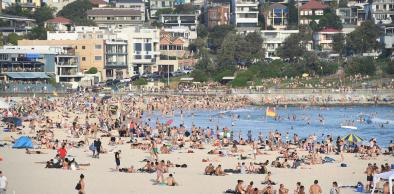Science Source
Cranking Up The Intensity: Climate Change and Extreme Weather Events
KEY FINDINGS
1. Climate change is influencing all extreme weather events in Australia.
- All extreme weather events are now occurring in an atmosphere that is warmer and wetter than it was in the 1950s.
- Heatwaves are becoming hotter, lasting longer and occurring more often.
- Marine heatwaves that cause severe coral bleaching and mortality are becoming more intense and occurring more often.
- Extreme fire weather and the length of the fire season is increasing, leading to an increase in bushfire risk.
- Sea level has already risen and continues to rise, driving more devastating coastal flooding during storm surges.
2. Some of the most severe climate impacts the world has experienced have occurred in 2016.
- Arctic sea ice reached its lowest annual extent on record while record sea surface temperatures drove the worst coral bleaching event in the Great Barrier Reef’s history.
- Tropical Cyclone Winston was the most intense cyclone to hit Fiji on record, while Hurricane Otto was the southernmost hurricane to hit Central America on record.
- Canada experienced its costliest wildfire in history in Fort McMurray, forcing the evacuation of almost 90,000 people.
- The US state of Louisiana experienced 1-in-500 year rains that brought severe flooding leading to 30,000 rescues and 13 deaths.
3. Across Australia, extreme weather events are projected to worsen as the climate warms further.
- Extreme heat is projected to increase across the entire continent, with significant increases in the length, intensity and frequency of heatwaves in many regions.
- The time spent in drought is projected to increase across Australia, especially in southern Australia. Extreme drought is expected to increase in both frequency and duration.
- Southern and eastern Australia are projected to experience harsher fire weather.
- The intensity of extreme rainfall events is projected to increase across most of Australia.
- The increase in coastal flooding from high sea level events will become more frequent and more severe as sea levels continue to rise.
4. The impacts of extreme weather events will likely become much worse unless global greenhouse gas emissions are reduced rapidly and deeply.
- Burning of coal, oil and gas is causing temperatures to rise at unprecedented rates and is making extreme weather events more intense, damaging and costly.
- Major emitters including China and the European Union are leading action on climate change, but Australia is lagging well behind and is on track to even miss its very weak target of a 26-28% reduction in emissions by 2030.
- Australia is expected to do its fair share to meet the global emissions reduction challenge by cutting its emissions rapidly and deeply.
- Phasing out ageing, polluting coal plants and replacing them with clean, efficient renewable energy sources such as wind and solar is imperative for stabilising the climate and reducing the risk of even worse extreme weather events.
Related Content
Headline

Mar 6, 2017 | The Conversation
Climate change's signature was writ large on Australia's crazy summer of 2017
Headline

Mar 2, 2017 | Climate Central
Warming Had Clear Hand in Record Australia Heat
Headline

Feb 27, 2017 | Illawarra Mercury
NSW summer weather makes heat records, perfect autumn on the way
Headline

Feb 21, 2017 | The Guardian
Australia’s new normal … as city temperatures hit 47C people shelter from the deadly heat


